Any biographer of much significance has not yet comprehensively written the life and work of eminent mystic and national poet Shah Abdul Latif Bhitai of Sindh. However quite a few writers have bent their energies in this direction, of whom the following deserve special mention.
Mir Abdul Hussain Khan Talpur, Mirza Qaleech Baig, laela Ram Watan Mal, Dr. Hotechand Gurbakhshani, Mr. Jeth Mal Parsram, Dr. J.H. Sorely, Maulvi Din Muhammad Wafai, Kalyan Advani and Ghulam Muhammad Shahwani. All these authors have exhibited a commendable spirit of dedication in their effort to highlight the life and work of Shah Abdul Latif Bhitai.
Since the aim of "Shah Latif and His Message" is not merely to bring to the knowledge of the readers the life and work of Shah Abdul Latif Bhitai, but at the same time the understanding of the political and social message of Shah Sahib and at the same time develop its comprehensive understanding in the reader. Keeping this in view, it is not considered of great significance "to record the experiences and incidents related to his personal life, it is regarded adequate to introduce to the readers about his family background and a brief history of his life.
The family of Syed Haider Ali, the son of Syed Amir Ali Herati is known in Sindh as "Sadaat Matyari. "Jarar Pota tribe is an honorable branch of this family. Shah Latif is the peerless scion of this eminent family. Sadaat Matyari traces its link with Jafar Saani al Havari, the son of Imam Moosa Kazim, and through this relationship, he is recognized as Kazmi.
The genealogical history of Syed Haider Ali has revealed that, he came to India during the times of Amir Timur around 801 to 806 Hijra. Alter visiting various places, temporarily he settled in Halkandi (Present Hala) where he married the daughter of Arbab Shah Mohammed and Syed Amir Ali Sani was born to her. He had three sons: Syed Sharfuddin, Syed Ahmed and Syed Murtaza.
The children of Sharfuddin came to be known as Pota and the children of Syed Ahmed were called Miran Pota through their relationships with Syed Ahmed son of Syed Al Syed Murtaza remained issue less. He came to be known, b, title of Shah Bharya, and he is entombed in his Mausoleum the north of Manjhand.
Of the children of a aforementioned Sadaat most of people, after their short stay at Hala, settled in a small not far from Hala, on the roadside. Sometime back a pious man who was entirely given to the worship of God, used to serve travelers who came for a drink, for which, purpose he kept a pitcher full of water. For this reason this village known "Mat Waru Goth" (The Village of the Pitcher) later came to be known Matyari. During the height period of fame, the 'Sadaat' designated the village Matt. During this Persian period in which the letter sounding did not exist, due to that in writing, it came to be known Matalvi. In the same manner, another off-shoot of Kazmi Syed family settled in a village at the foot of Bhago Thoro mountain neighboring a village by the name of "Lak Waro Goth" or Lucky, who named this village Luck Alvi during the period of their glory. Consequently, this same village came to be known as "Sadaat Lak Alvi or Layari".
The actual time when the above mentioned Sadaat left Hala to settle in Matyari cannot be established with any certainty. However, by the information available through the tradition one can presume the time between 830 H to 840 H. After their settlement in Matyari for a fairly long period of time, when their families began to flourish and the grew, ultimately, due to the paucity of sources of livelihood, mutual rivalries, domestic feuds, and due the defects of their customs and traditions, a fairly large number of families departed and settled in other villages. During the period of their settlement in Matyari these Sadaat split into four different tribes. These tribes are, known by names of 1. Jarar Pota 2. Baqeel Pota, 3. Moosa Pota 4. Moeen Pota.
1. Jarar Pota: This tribe derives its name from the title of its first venerable elder Syed Jalal known by the title of Jarar. At the chief of this tribe, in the city of Matyari, is Syed Ali Sher. Four members of this tribe achieved eminence as saints (or pious men).
(A) Syed Shah Rukunuddin: He was a pious and venerable man, and had the honor to have gone through the early stages of his education in the hands Makhdoom Sahir (Sawai) Lanjar. Shah Ruknuddin's final resting- place is in Matyari. The exact year of his death is unknown. It is conjectured that he died somewhere between 350 Hijra to 380 Hijra. The tomb of Makhdoom Sahir Lanjar stands on an elevated near Unarpur Railway Station.
(B) Syed Hashim Sakhi: Syed Hashim Sakhi achieved an honorable position through the learned men of the tribe, begins with his great grandfather Shah Ruknuddin. He died on Rabi-ul-Awal 1100 Hijiri. He is buried next to the tomb of Shah Ruknuddin. Every year a fair is held at his tomb on 14th Rabi-ul-Awal, in which devotees participate in thousands. Of his descendents, Pir Haji Baqadar Shah, at present occupies his seat of honor.
(C). Syed Shah Abdul Karim: Syed Shah Abdul Karim was born in the city of Matyari, but as he gained in years he left the city and settled in the Bullary town, in the Tando Muhammad Khan Tehsil.
These characteristics of sainthood, he received from Syed Abdul Quddus and Shah Ibrahim Bokhari, who was a holy man from the line of Qadria He also continued his visits to Makhdoom Nooh, the influence of which is quite evident in his life. Syed Shah Abdul Karim was a poet of great eminence, he enjoyed a great reputation because of his patience, and faith stories are related to his life in this connection. He died in Bullary and his tomb stands at this place. Every year, on the day of his death, 15 Ziqaad a fair is held, and from everywhere his devotees in thousands gather in this fair to honor him. During this fair, the Sajjada Nashin at his Shrine is Pir Mian Ghulam Haider Shah.
(D). Syed Shah Abdul Latif Bhitai: Later in this book a brief life history, of Shah Abdul Latif Bhitai will be related. This book has been written especially explain and illustrate his poetry, which primarily, consists of Ibbiyat.
2. Baqeel Pota: The members of this tribe are the descendents of Muhammad Baqar. Many saints and pious men have existed in this branch of the Sadaat Syed Shahmir Shah who was a reputed scholar and a man of great piety, related to Maulvi Muhammad Hashim Thatvi, came from this tribe. At present Syed Awal Shah son of Syed Haji Muhammad Shah is a leading landlord and man of liberal views, and is the chief of this tribe.
3. Moosa Pota: The members of this tribe are the descendents of Syed Muhammad Moosa Shah. There have been large number of people, who were landlords of repute and wielded influence. A leading member of this tribe Syed Tayyab Shah was one of the most honorable Caliphs of Makhdoom Nooh. Therefore, till the present time his relations with the Makhdooms of Hala have existed. Jamot Zulifqar Ali Shah, a son of Muhammad All St is the present chief of this tribe, and is known for his wisdom wide influence in the position of a leading landlord.
4. Moeen Pota: The members of this tribe are the descendents of Syed Maidno Shah son of Syed Muhammad. Syed Ahmed Shah, the son of Syed Maidno Shah has two sons Syed Ashraf Shah Syed Dhani Dino Shah. The descendents of Syed Ashrsf Shah founded a village by the name of Saeed-pur in Tehsil Goni, and lineage Syed Muhammad Kamil Shah achieved great fame. His nephew is still living in the above-mentioned village. Syed Ibrahim Shah the son of Syed Dhani Dino Shah was companion of Jam Nizam Din alias Jam Nindo's Prime Minister Dulah Darya Khan. He was martyred when he was assigned the responsibility of quelling the rebellion of Chang tribes. His shrine is in the neighborhood of Village Khanot of Tehsil Kotri. Syed Ibrahim Shah had two sons, Syed Badruddin and Syed Dhani Dino Shah.
Syed Haider the grandson of Syed Badruddin Shah an eminent scholar, and Haafiz-e-Quran, had performed pilgrimage in Mecca, and was known for piety and spiritual elevation. He had the honor of being the companion of Makhdoom in collaboration with Makhdoom Bilawal. He launched final struggle to protect the power of Sindhi rulers against the attacked by Shah Baig Arghoon. At the time when, Syed Mohammed Miran Jaunpuri on his way to Afghanistan, was passing through Sindh, due to the preaching of Mehdvi School of thought, he clashed against Syed Haider Shah, it was said that as a result of this conflict two boats loaded with rations were sunk, Syed Haider had considered Mehdvia school of thought as dangerous for Sindhi rule, and therefore had declared his opposition against it. Syed Haider who died on Monday, Shaban 4, 937 Hijra at town of Sann holds a great attraction for the people who visit shrine. A fair is held on his day of death, in which devotees, coming from far and wide, participate in thousands, and join in ring prayers for the departed soul. The present successor and occupant of his seat of honor is author of this book G.M. (Ghulam Murtaza) Syed. The descendents of Syed Dhani Dino Shah, the son of Syed Ibrahim Shah are also called "Garho Syed (the Red Syed). Their descendents later shifted to Kotri, of whom Syed Ali Akbar Shah achieved great fame. The celebrated poet of Lasbela was Syed Kabir Shah, and whose final resting-place is in village Uthal (Lasbela), belongs to this branch of the tribe. This is the brief account of the events, which is presented introduction to Sadaat Matyari for the readers.
Shah Abdul Latif belongs to this family. He was the son of id Shah Habib. He was born at Tehsil Hala in Village Bhayepur in the year 1290. Bhayepur lies nine miles from Bhit Shah, but for long time has been lying deserted. However, you will find at his place of birth a mosque on the bank of Old Naseerwah land built by Loong Faqir of Khairpur. This is the only structure, which has survived in the village. He was also the great grandson of Shah Jamal, the son of Shah Abdul Karim of Bullary. He received his early education in his native village, but when the local priests and the spiritual guide’s failed to satisfy his spiritual hunger, donning the garments of a beggar he set out for a journey in Sindh. During these travels, he visited the jungles and mountains, the land & sea, the rivers and deserts of the entire province of Sindh. Consequently, he availed of this opportunity to look closely at the lives of all different classes of the people and to understand their condition, traditions and feelings. During these travels he had the opportunity of the company of well-known scholars, sages, mystics, and those exceptional men who had renounced the world for spiritual enlightenment Some of those spiritual mentors and religious scholars he had met are mentioned below.
1. Shah Inayat Sufi (the martyr): Shah Inayat Sufi lived in village Jhok in Tehsil Mirpur Bathoro, and his final resting-place, is in the same village. He embraced martyrdom in the year 1130 Hijra. Every year a fair is held here on Safar 17 commemorating his martyrdom. Thousands of devotees assemble here to visit his shrine. He was a saint of great merit and wielded wide influence. Further detailed account of his life will be found in a sub- sequent chapter.
2. Mukhdoom Muhammad Moeen Thatvi: Mukhdoom Muhammad Moeen Thatvi was the inhabitant of the city of Thatta and was an eminent scholar and a saint. He was one of the few selected pupils of Shah Waliulluh Dehlvi and was particularly close to Shah Latif he died in 1160 Hijra.
3. Shah Inayatullah Rizvi: Shah Inayatullah Rizvi used to live in the town of Nasaspur, and was a descendent of Syed Nasaruddin son of Syed Khairuddin Shah Bakhri. During the times of Shah Latif, he was old. He was a poet of great merit in the Sindhi language. His Rasala (the collection of his work) has been published. His shrine is in the town of Nasarpur. In the recent past the eminent poet, Misri Shah Sindhi came from his family.
4. Mukhdoom Muhammad: Mukhdoom Muhammad was deeply religious and God loving person. He lived in the village Khuhra Of formerly Khairpur State. He died in the year 1172 Hijra.
5. Mukhdoom Muhammad Hashim Thatvi: He was an eminent scholar of the city of Thatta, at the time strictly followed the Shariat (the Muslim religious law), and practiced abstention from worldly pleasures. His religious dictums (Fatwas) were well known to the people. He died in 1172 Hijra.
6. Syed Shahmir Shah: He came from the Baqeel Pota branch of Sadaat Matyari, was a religious scholar and strictly adhered to the Muslim religious law (Shariat). He was one of the selected disciples of Mukhdoom Muhammad Hashim, Thatvi. He used to have frequent meetings with Shah Latif.
7. Mukhdoom Sabir Vulhari: He is regarded as one of the great religious scholars of his time and was a religious teacher of the line of Naqshbandia. His place is in Tando Allah Yar.
8. Mukhdoom Muhammad Zaman Lowari: He was known as a deeply God-loving, religious teacher of the school of Naqshbandia and was a deeply learned man. His final resting-place is in Village Lowari Tehsil in Badin District. He died in 1184 Hijra.
9. Faqir Sahib Dino Farooqi: He belonged to Village Daraza of formerly Khairpur state. He had been known as a mystic. He was also the grandfather of the singularly eminent poet Sachal Sarmast. He died in the year 1192 Hijra.
10. Makhdoom Din Muhammad Sehwani: He belongs to the city of Sehwan and was an eminent scholar and was a venerable personality of the school Saharawardia He was a so deeply learned in matters of Muslim religious law (Shariat) that the contemporary rulers used to seek his advice in religious problems.
11. Syed Muhammad Baqa Lakyari: He was the son of Syed Mohammed Rashed Rozi Dhani who In turn was the great grandfather of Rashidi Sadaat, who enjoys a great following in Sindh. He is one of the descendents of the religious leaders of Pagara and the (religious leader) known as Jhande Wara. He had the opportunity to meet Shah Latif during a journey. He always led a simple life and died in the year 1192 Hijra. His shrine is in Sheikh Tayyab graveyard.
12. Makhdoom Abdul Rahim Grohri: He lived in village Grohar of Tehsil Khipru. He was Mangrio by caste and was a great scholar, self-effacing, and possessed an exceptional skill in the act of disputation and debating. He was one of outstanding successors of Makhdoom Muhammad Zaman Lowari. He subscribed to the Naqshbandia School of though. He embraced martyrdom in 1192 Hijra.
13. Madan Bhagat: He was a Hindu saint and a poet and had a deep attachment with Shah Latif. Many stories of gatherings and meetings of these eminent men are well known to the people. He used to live in the same village where Shah Latif lived. Some of his work in poetry, the Hindu preachers used to Sing by amalga- mating his poetry with the poetry of Shah Latif.
Apart from all the celebrated personalities mentioned above Shah Sahib also reaped great benefit through the companionship of Hindu Saints. For instance Hindu mendicants, yogis, ascetics and those who had renounced the world. Shah visited their temples and their places of pilgrimage in their company, and acquired deep knowledge about their sects, beliefs, systems and their customs and traditions. Most probability it was in the company of these Hindu religious men that he immersed himself in in-depth study of various beliefs enshrined in Vedanta (vadanta is a system of Medieval thought expressed in commentaries on the Brahma Sutras) The practical works of quite a few Hindu pious men is comprised in the collected works of Shah Latif and in his magazine 'Sur Bairag Hindi' it appears that such verses were usually sung or read in his gatherings. Consequently a large number of such verses been included in the collected works of Shah Latif.
Most probably, Shah Latif traveled at different times in different direction during his youthful period. Travelling from the north, and passing through the state of Bahawalpur, we find him reaching Multan. At one time, he brought tiles in the boats for the shrine of Shah Abdul Karim of Bullary. In the direction of the West, he is known to have traveled to Lasbela and Hinglaj. In the south, he appears to have visited Ibrahim Haideri, Rabri, Kharo Chhan, Purbander, Kachh and some parts of Bhuj along the seacoast. The fact that presence of quite a number of flowers of Shah Abdul Karim of Bullary at Ibrahim Haideri, Reerahi and Kharo Chhan corroborates the view that Shah Sahib had ranged all these places in the younger days.
In his Rasala (His collected works) Shah Latif has given a detailed account of the traditions, customs and ancient tales of the inhabitants of Kachh. This is a clear evident of the fact that he served this region very closely and in its detail. Sur Bairag and Samondi in Shah Latif's Rasala reveals that he had a long time in the coastal settlements among the people.
He is reported to have traveled to Kathiawar. During his travel in Junagarh, he had the opportunity to hear and understand in detail the tales related to Bijal and Rai Diaj. This is the reason that these tales constitute an integral part of his political work.
Most probably, he passed a fairly long period of time in Thar. He has presented such remarkable details of life in Thar in Sur Marvi, as if he had composed his verses (Ibbiyat) during his stay there. He also had special attach- ment with Jaisalmir. At one place he says:

It is evident by the details in which Shah Latif has described buffaloes, wells, fountains and islands in Sur Sohni, that he had stayed in the settlements on the river bank and the wilderness for a long time.
Because Shah Latif passed the major portion of his early life in travels, in meeting variety of people and keeping their company, he had acquired a deep understanding and knowledge of the conditions of the common people. The habits and simplicity of the nomadic people and farmers seems to have deeply affected him. Because he never found any pleasure in the company of landlords, priests, self-styled saints and rulers, he always maintained a close contact with common people. He was deeply influenced by mysticism. During the last ten years of his life, he established his seat Bhit where he continued his stay till the end, and passed a greater part of his time in the company of his companions and mendicants. It was in these very gatherings and during this period that the substance and essence of his life long research, learning and impressions has been revealed to the people. The religious scholars and rigid adherents of the religious law (Shariat) had imposed restriction on songs and music, but he boldly launched a rebellion against these unnatural restrictions, and laid the found- ation of presenting poetry with songs in the accompaniment of rhythm and music.
It is said that in his early literary period his verses were also sung in the manner of other poets of Sindh in the form of "Dohas" without the accompaniment of musical instruments. For instance, the poetry of Makhdoom Noh Ghaus Bahauddin and the saints like Pir Pathu was presented in song in this manner.
Before this, in religious gatherings in Sindh where devotional songs constituted an important part of prayers Bait 'Wae' and songs were increasingly sung with the accompaniment of a pitcher, single stringed instrument or a drum. But at the seat of Latif, when two musicians, Atal and Chanchal Faqir arrived from Delhi, and settled down with Shah Latif for the first time a tradition was established in which the verse of Shah Latif began to be sung on Tambura, (Tabor) in the manner of Indian Music.
In the times preceding Shah Latif; during his own time and in the period following him there have been poets of high merit and popularity in Sindh, but there has been no poet of his caliber. He has always been considered among the most celebrated of world's national poets. Just Amra-Al-Qais was a celebrated poet of Arabia in pre-Islamic era, Firdausi in Iran, and Shakespeare in England, in the same 'tradition Shah Latif enjoys the same superiority over the other national poets of Sindh. From this point of view Shah Latif can justly be considered the national poet of Sindh.
What is usually said about Shah Latif that he had no education is not entirely true. It was common knowledge during his time that he always carried with him the Holy Qur'an, Mithnvi Maulana Rome and the Rasala of Shah Abdul Karim of Bullary. This fact serves as a clear evidence that he had exceptional knowledge of literature. However, since he had acquired no academic education and an academic certificate, one can safely say that he was not an educationist in modern parlance. If we take an analytical look at his poetry and thoughts and ideas enshrined in it, we can easily come to the conclusion that his vast knowledge was acquired through unacade- mic sources.
Even his death occurred when he was in a state of ecstasy. It is said that at that time a session of music was in progress at his place. He was totally absorbed in listening to the music. The musician had created such a hypnotizing atmosphere through song and rhythm, which Shah Sahib drifted into a state of ecstasy. As the music approached its climactically stage, there was a corresponding ecstasy in Shah Latif, and as soon as the music come to an end Shah Latif’s soul departed from his human frame. The date of his death is 14 Safar 1165 Hijiri. (1752 AD). His Shrine is in village Bhit four miles in the east of the City of Hala. The ruler of Sindh, Mian Ghulam Shah Kalhora, constructed his mausoleum.
After the demise of Shah Latif, Syed Jama1 the son of his nephew succeeded him. In the beginning there arose a dispute about the succession, but it was settled after Mian Noor Muhammad Kalhora (the Ruler of Sindh) gave his verdict in the favor of Syed Jamal. At present Ghulam Shabir Shah son of Syed Pir Shah Dino Shah, a pious and venerable man, one of the descendents of Syed Jamal, holds that position. Every Thursday a session of devotional music is held at his place, and an annual fair is held on 14th, 15th and 16th of Safar. His devotees are widely spread in all corners of Sindh and whole world.

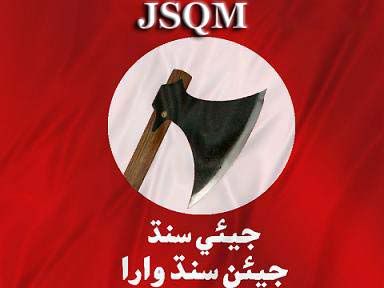
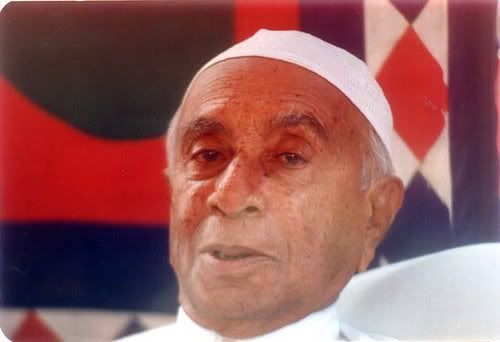

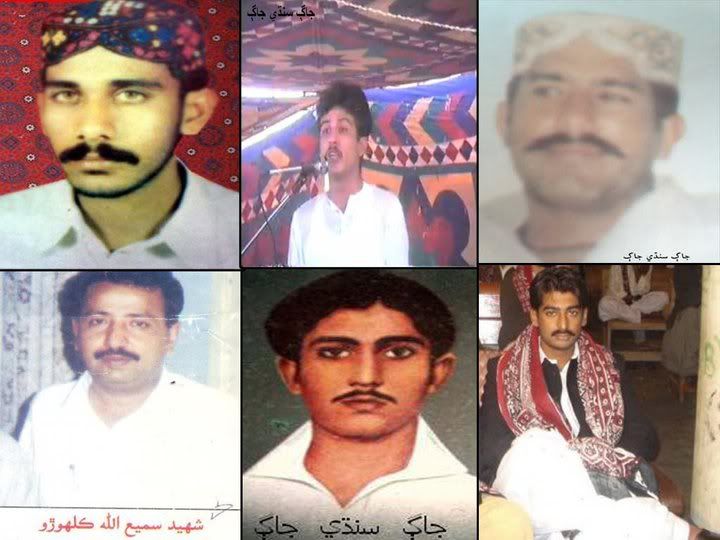
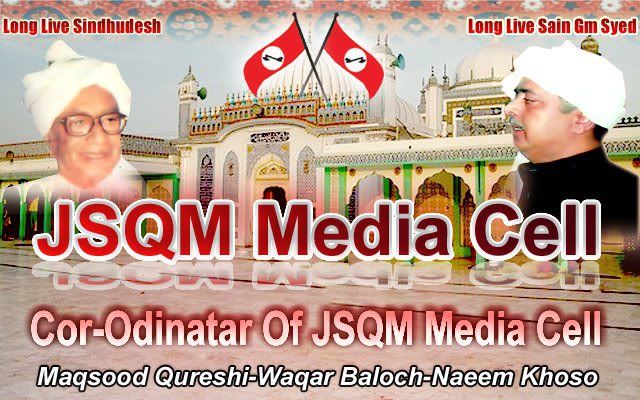



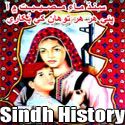





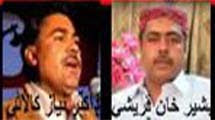
Currently have 0 comments: